What is DataStage and What is DataStage used for?
DataStage is an ETL tool used to extract, transform and load data from multiple sources into a data warehouse. The goal of DataStage is to provide businesses with an efficient and automated solution for accessing and analysing large volumes of information across platforms and systems – it can build pipelines, perform data cleansing functions, integrate multiple sources together into one database and produce reports.
DataStage tutorial: Overview, Introduction to DataStage
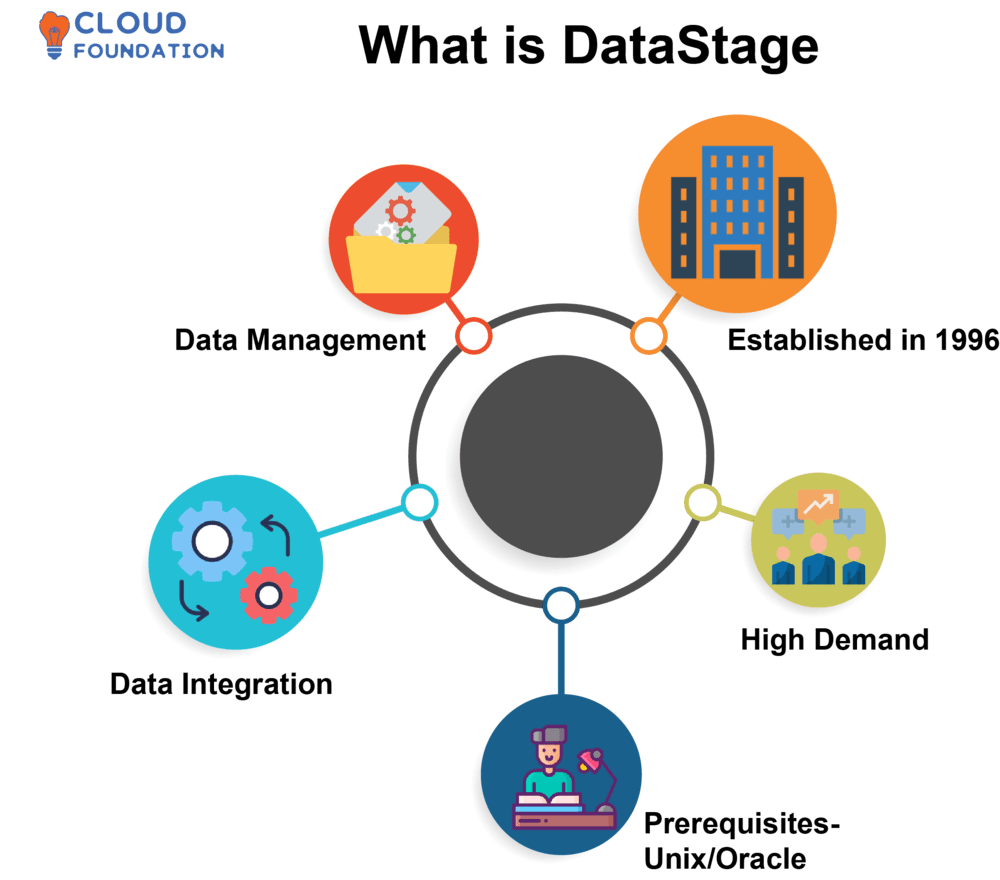
IBM Infosphere’s ETL tool DataStage can transform and load data from various sources according to business requirements before being loaded into their desired systems.

DataStage offers an integrated data integration and management platform, designed to assist organizations in overseeing their data integration process more easily.
Furthermore, DataStage can also be used for creating data quality solutions, data marts and data warehouses.
DataStage definition OR Define DataStage
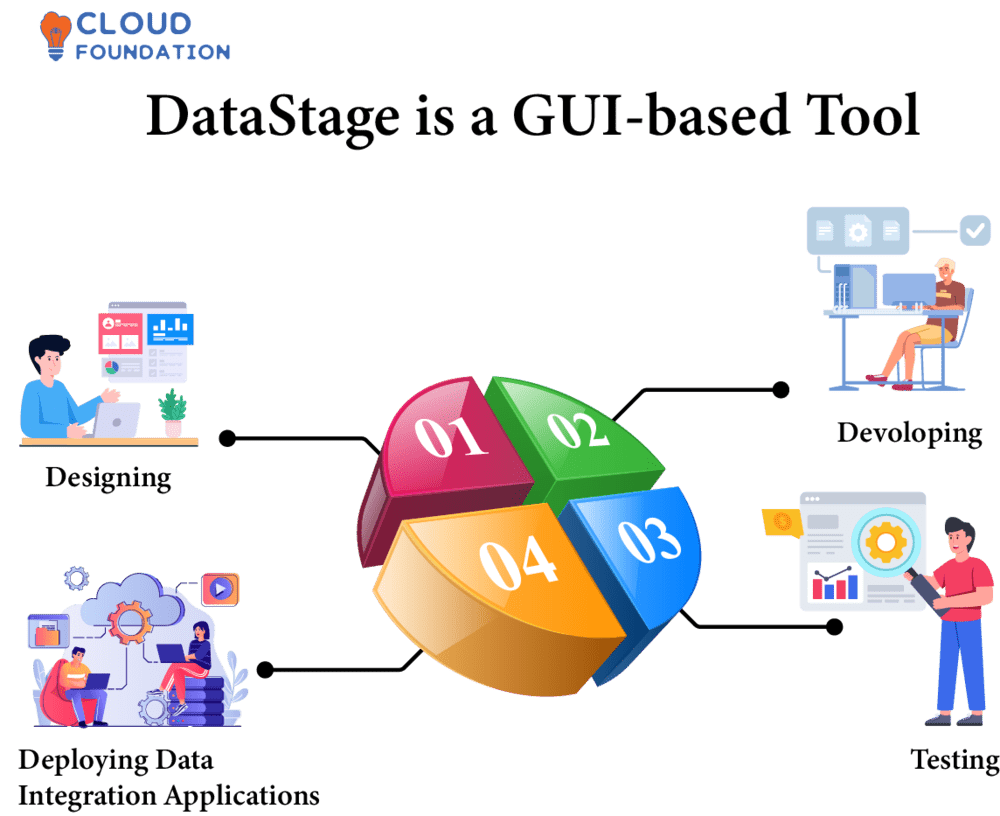
DataStage is a GUI-based tool for designing, developing, testing, and deploying data integration applications. It helps organizations with data analysis as it facilitates data extraction, transformation, and loading applications that help support data warehouses and marts.
DataStage helps organisations integrate structured, semi-structured and unstructured data. It connects databases, flat files, XML files and online services.
Companies can aggregate information from multiple sources using DataStage as it transforms, cleanses and verifies it before placing it into its target location.
DataStage supports Oracle, SQL Server, DB2, and Sybase databases as well as CSV, XML and JSON formats for CSV files and JSON documents.
Furthermore, DataStage features many data transformation components as well as reports and dashboards to allow for data visualisation.
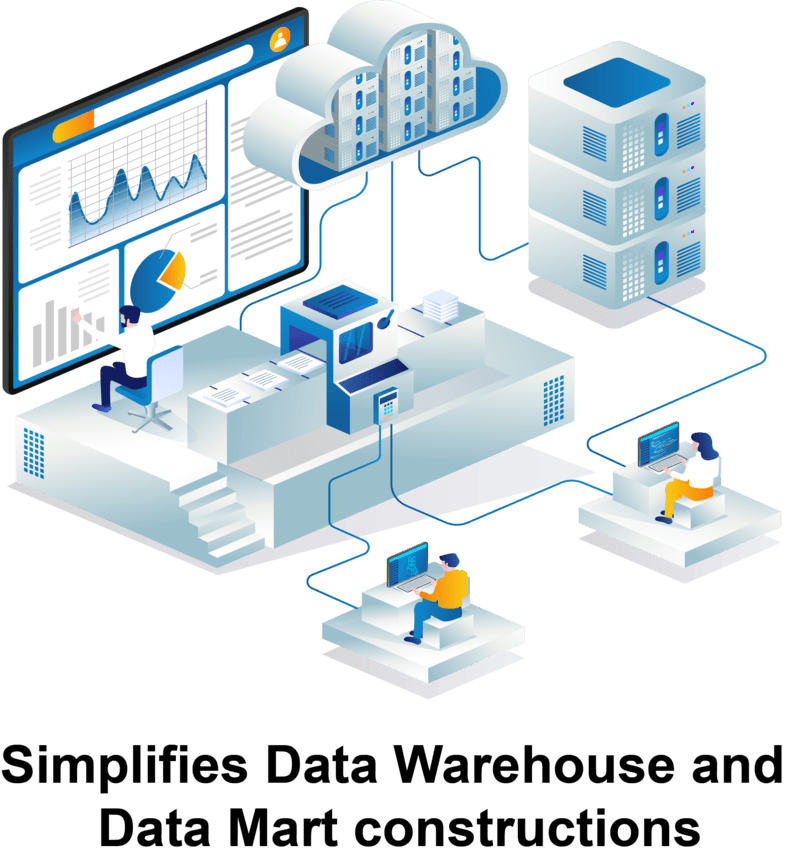
DataStage offers companies an effective means for managing and transforming data. It simplifies data warehouse and data mart construction and assists organisations with integrating, transforming, and loading multiple sources of information into one target – making DataStage ideal for data warehouses and marts.
What is IBM DataStage?
Data from diverse sources is combined using a tool called IBM DataStage before being sent to business applications or data warehouses. It has an execution engine and a design tool.
A technology called DataStage is used to combine data from numerous sources and send it to business applications or data warehouses. It has an execution engine and a design tool.
What does DataStage do and what is DataStage ETL used for?
DataStage is an integral component of its tool set and is utilized by various industries across many verticals.
Data is extracted from source systems, transformed, and loaded back into target systems using this technique – which makes DataStage ideal for data warehouse environments.
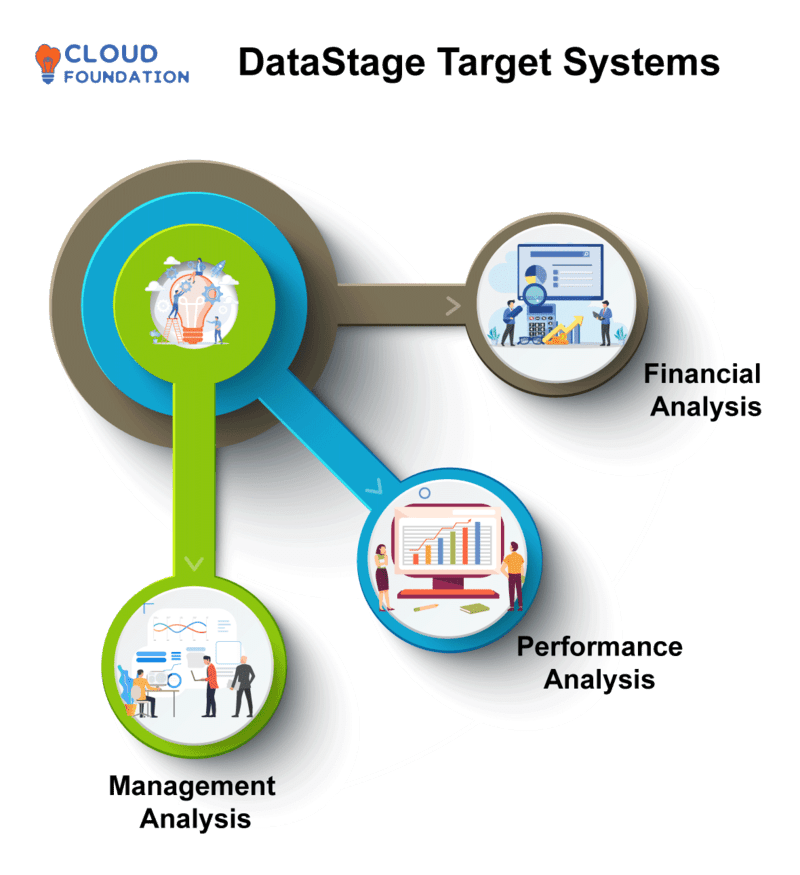
Finance and accounting departments rely on DataStage for data extraction from source systems, transformation and loading into target systems for financial, performance, and management analysis systems.
DataStage can also be utilized as part of these systems to extract, transform and load customer data from various source systems into the Customer Relationship Management system. Furthermore, DataStage links operational data among applications.
How does DataStage work?
DataStage can help businesses combine and consolidate data from disparate sources – such as databases, flat files and XML files – into an easily consumable format for analysis.
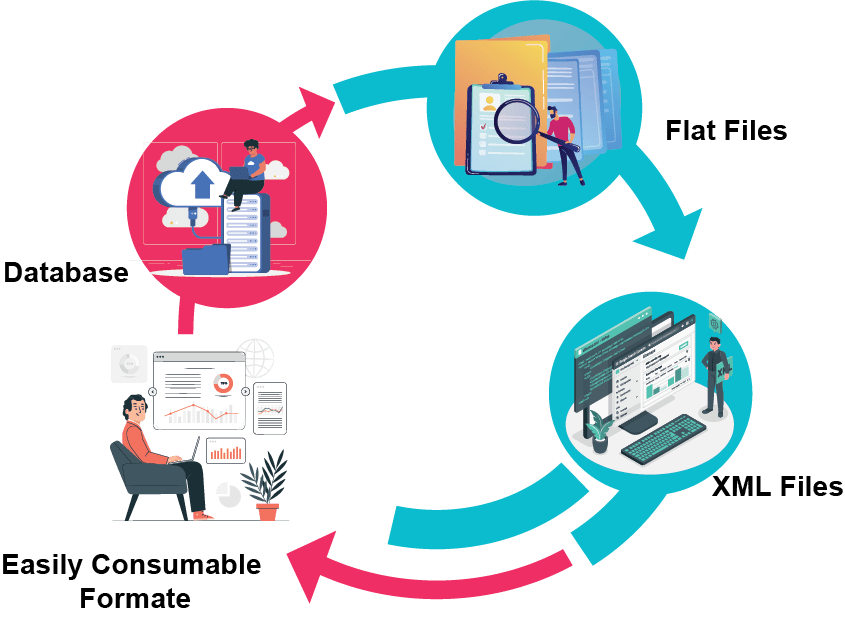
In addition, businesses rely on DataStage for developing complex data processing programs with enterprise-scale scalability and quality assurance capabilities.
DataStage has found application in many other sectors besides financial, healthcare, retail and manufacturing.
DataStage allows organisations to process huge volumes of data quickly and easily allowing for easy data integration processes with minimal technical expertise required by users thanks to DataStage’s intuitive graphical user interface.
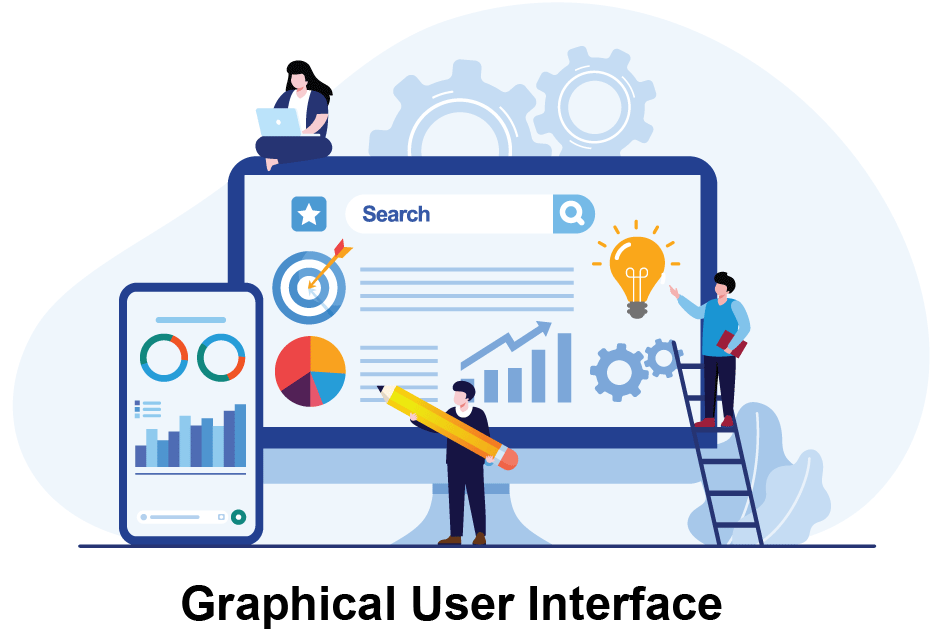
Businesses looking for quick and effective integration solutions will find DataStage to be an ideal choice.
Why DataStage and what are the benefits of DataStage?
Large and diverse data sets can be easily converted into useful information by using DataStage, an enterprise-level ETL (extract, transform, and load) application that efficiently processes ETL tasks across databases, flat files, XML files and online services.
Organizations can quickly transform large volumes of information using this powerful method for clean-up, transformation and analysis using this software solution.
DataStage also boasts powerful capabilities for data quality and governance that assist organizations in assuring the reliability and accuracy of their data.
Finally, DataStage offers robust security measures to protect sensitive information as well as helping organizations comply with industry standards.
Data integration tools combine information from a variety of sources, including sequential files, indexed files, relational databases, external data sources, archives and enterprise applications.
DataStage is an ideal solution for handling large volumes of information efficiently. Offering high performance and parallel access to various data sources, DataStage makes short work of processing and manipulating large amounts of information.
Benefits of DataStage
DataStage offers several key advantages that make its implementation simple and efficient:
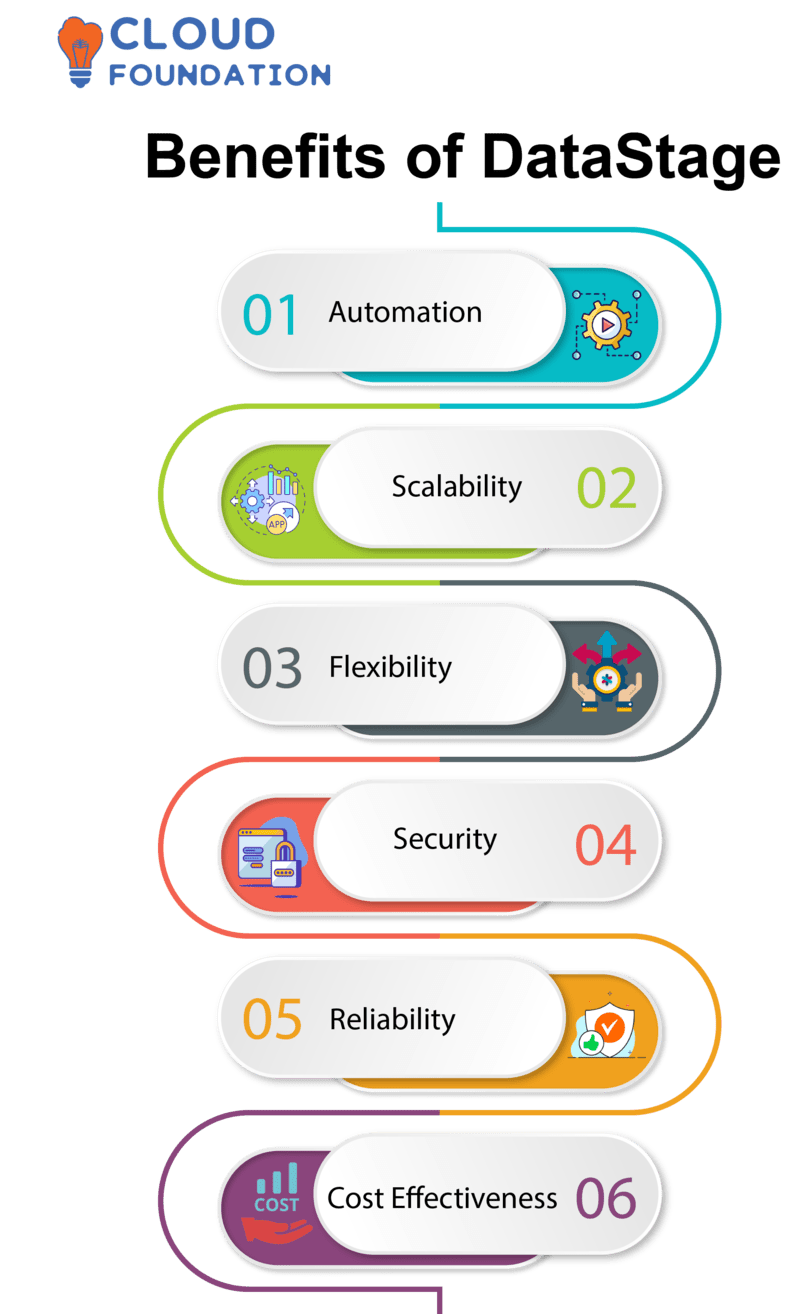
Automation: DataStage is made to automate the integration of massive amounts of data, making it simpler and quicker to transport such data across various databases and applications.
Scalability: DataStage can easily adapt to meet the evolving needs of an organisation and is equipped to handle massive volumes of data.
Flexibility: With its comprehensive set of tools and settings, DataStage enables users to tailor their data integration experience according to individual preference.
Security: DataStage provides a safe environment for businesses to store their information safely, preventing any unauthorised access.
Reliability: Built to ensure data remains current and correct at all times, DataStage guarantees its functionality through efficiency and dependability.
Cost Effectiveness: DataStage’s low costs make it cost effective; its use eliminates costly manual data integration procedures that take both time and resources to implement manually.
The advantages of the DataStage tool are as follows
It reduces the effort associated with building data pipelines.
Facilitates application development that fills any gaps between data sources and data targets
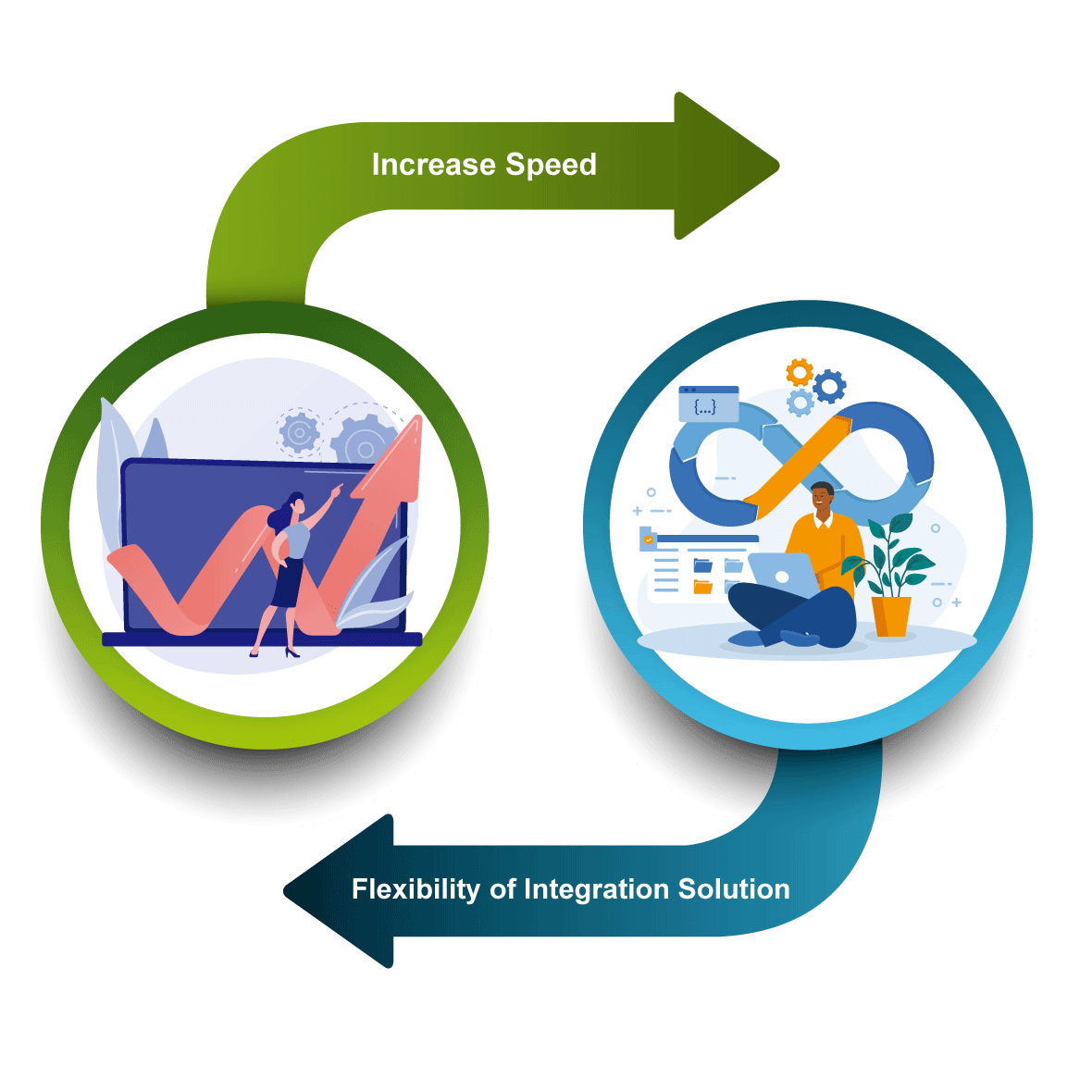
It is intuitive to use and can quickly increase speed and flexibility of integration solutions.
What is DataStage software and how to use DataStage?

DataStage Software is a data integration solution used for the extraction, transformation, loading, profiling and metadata management of disparate sources.
Additionally, DataStage comes in two editions – Server Edition and Enterprise Edition
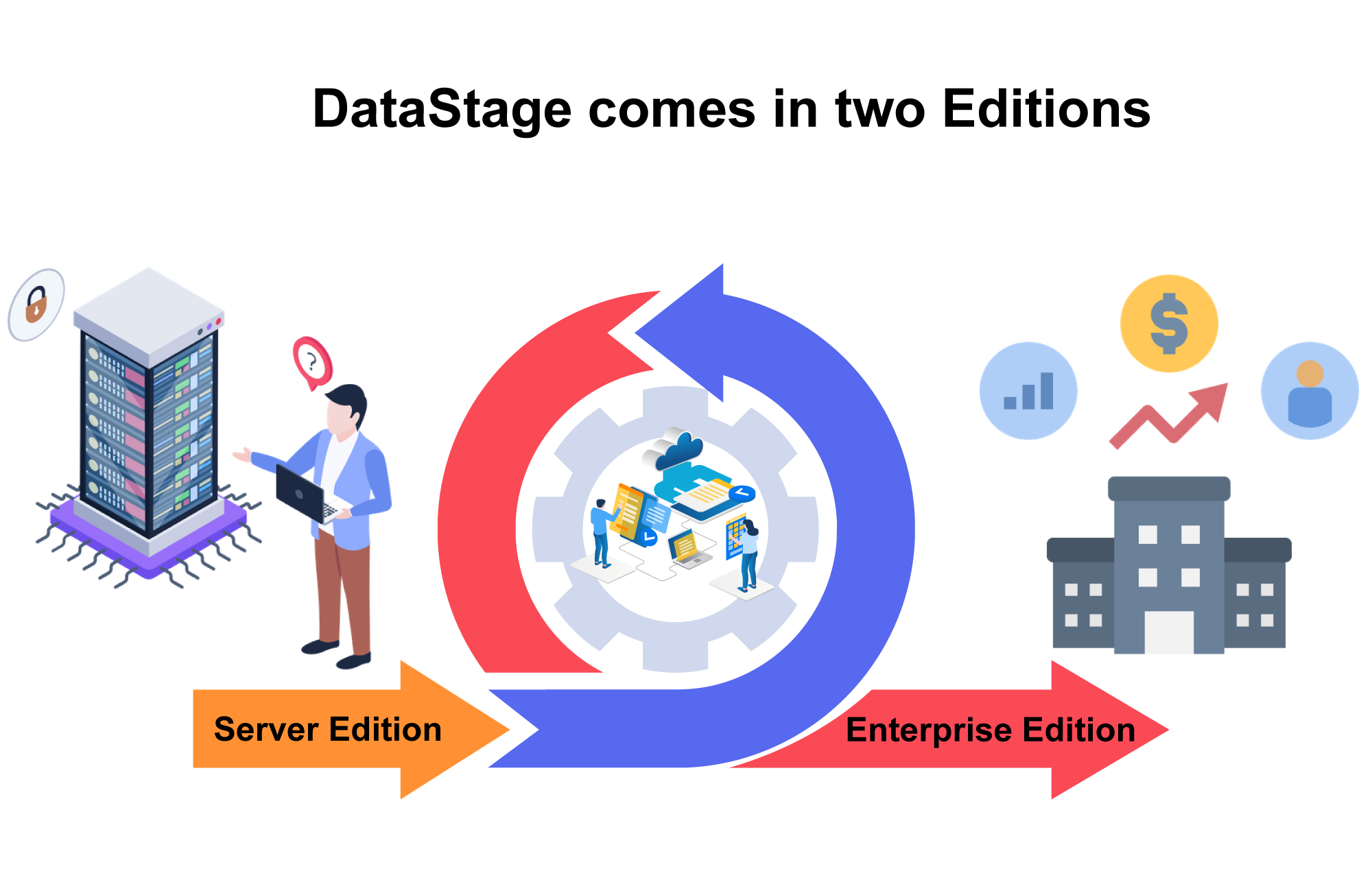
With Enterprise featuring extra features like parallel processing, scalability and high availability as well as an Enterprise Information Integration Server to integrate multiple heterogeneous data sources simultaneously.
Start by creating a DataStage project. This entails setting up the DataStage environment and creating a repository in DataStage.
Choose the appropriate job type from the DataStage Designer to create a DataStage job.
To specify its data flow within, add nodes that match up with relevant node positions on the job form.
Connect nodes to data destinations, transformations and sources as planned.
Compile and run the task to test for any defects.
Verify outcomes to make sure job performs according to plan before launching it and monitoring progress.
Launch job and watch its progress closely until completion.
DataStage Modules
The following modules are included in DataStage:
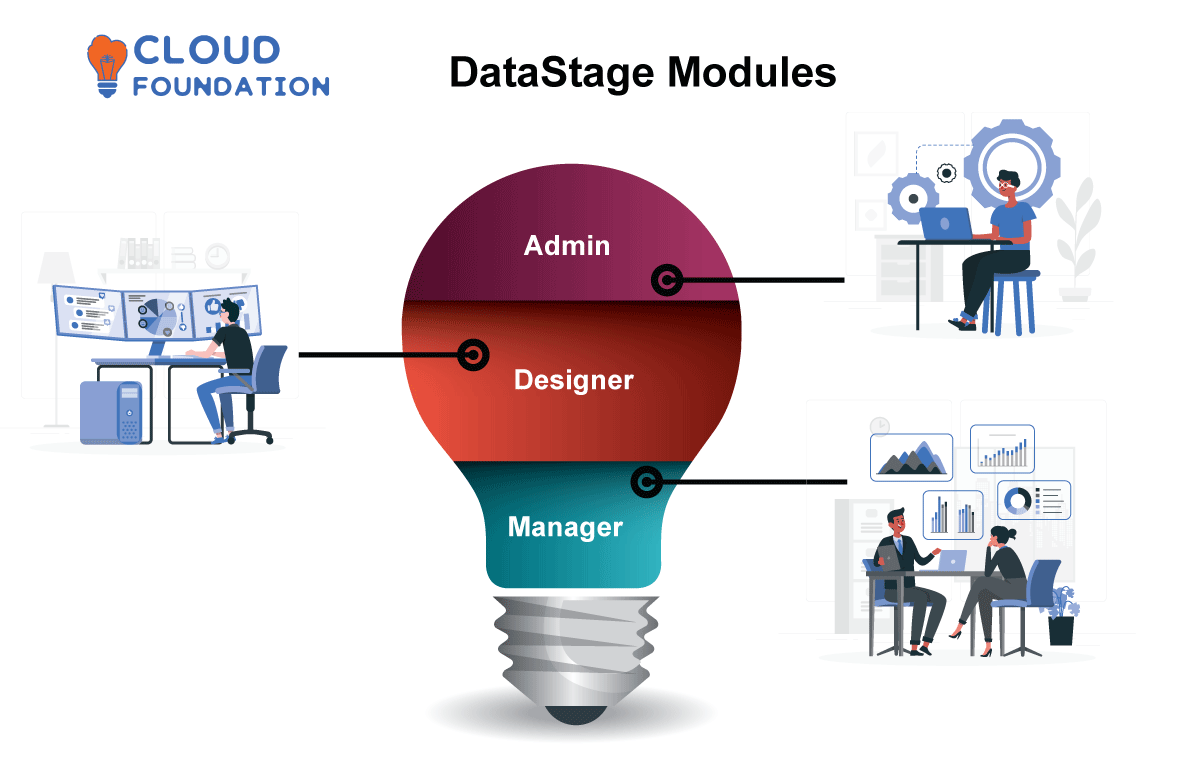
Admin: A project may be created, renamed, moved, copied, or deleted. Moreover, it includes project attributes including the project’s description and a list of its developers.
Designer: It is used in the ETL process design. DataStage Operators, DataStage Jobs, DataStage Configurations, and DataStage Designer are its four primary sections.
Manager: It is used to keep an eye on and oversee the active tasks. The following are included:
Operators: It is used to observe and manage operators.
Jobs: It is used for managing and viewing jobs.
Configurations: It is used for managing and viewing setups.
DataStage tool enables the development, editing, validation, and execution of sophisticated batch or in-the-moment data transformations.
All forms of data (from databases and corporate applications to sequential and direct access files) can be transformed using its extensible architecture.
Here are a few examples:
Developing and maintenance of ETL (extract, transform, and load) procedures
Transferring data from a source to a target
Huge business apps’ data management
Supplying the interface for updating and validating data
Applications requiring high performance use DataStage.
There are several variations of it, here are the different versions:
Knowing the many sorts of DataStage projects is crucial before advancing to the various versions of the software.
DataStage projects are divided into three categories i.e.,
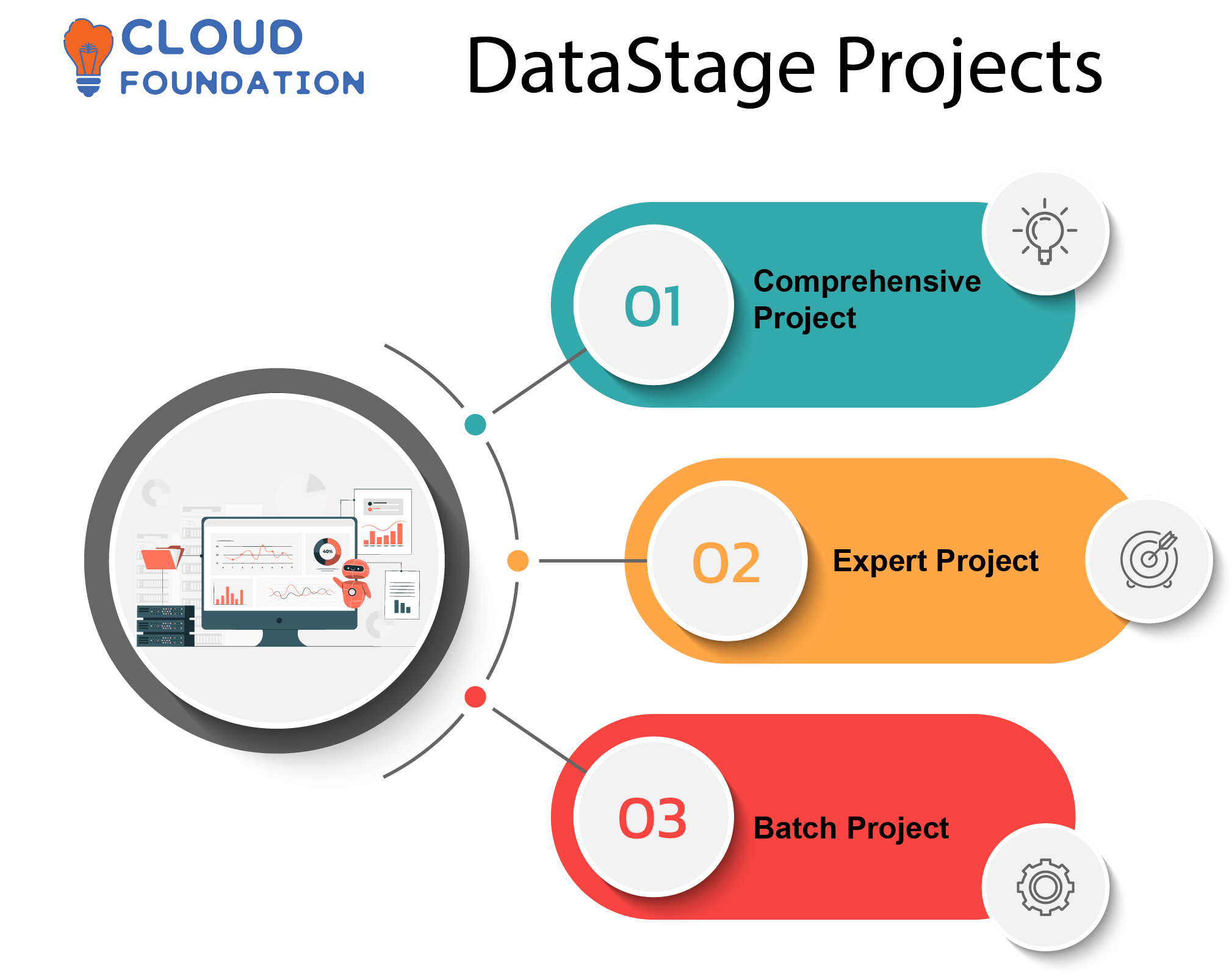
Comprehensive project
Expert project
Batch project
More than 120 million people worldwide utilise it.
Different versions of DataStage
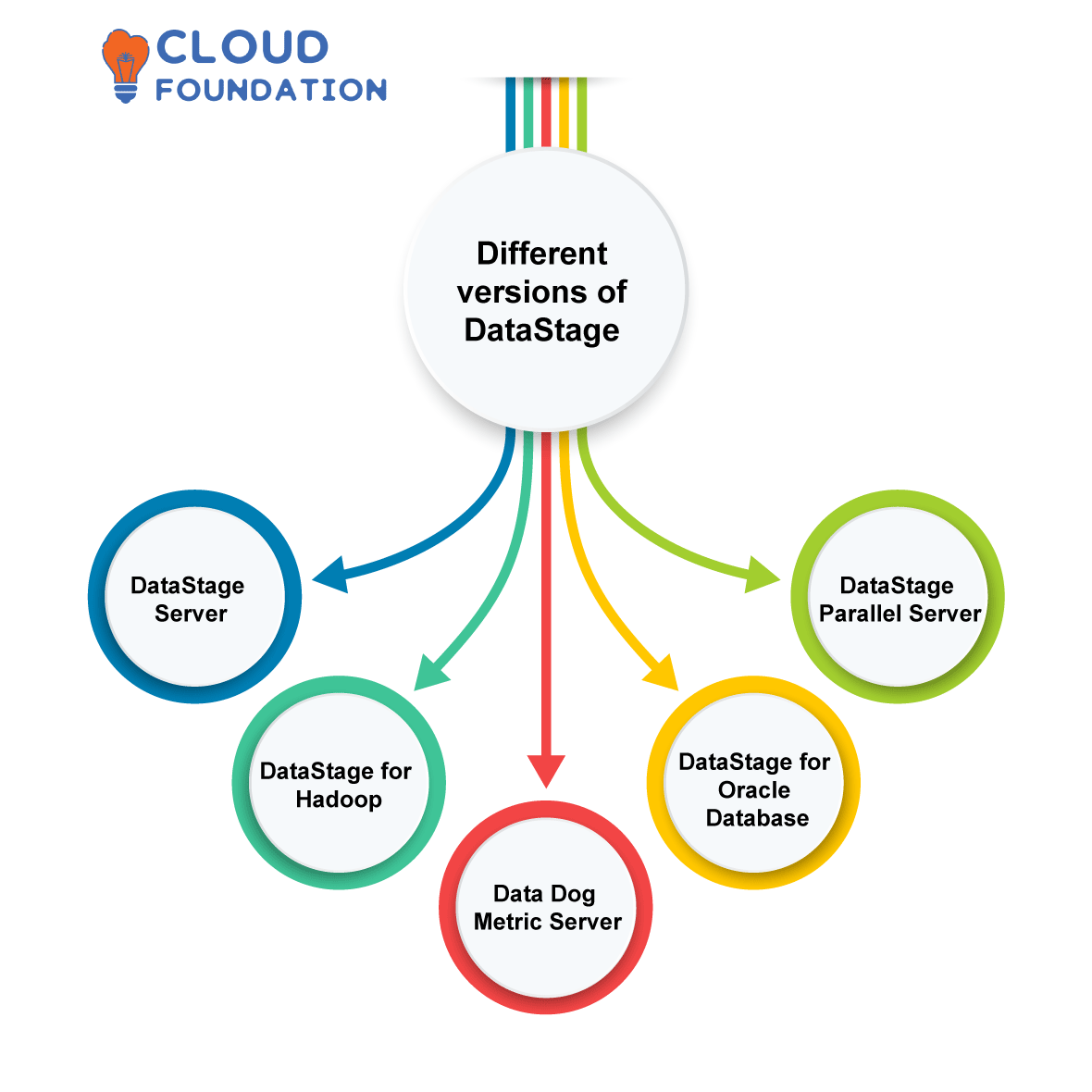
DataStage Server,
DataStage for Hadoop,
DataStage for Oracle database, and
DataStage Parallel Server
What is DataStage Developer?
For developers who are interested in learning more about DataStage, DataStage is valuable as a DataStage Developer has a huge scope in current industries thus he could have a great career opportunity.
What is the Best Way to Learn DataStage
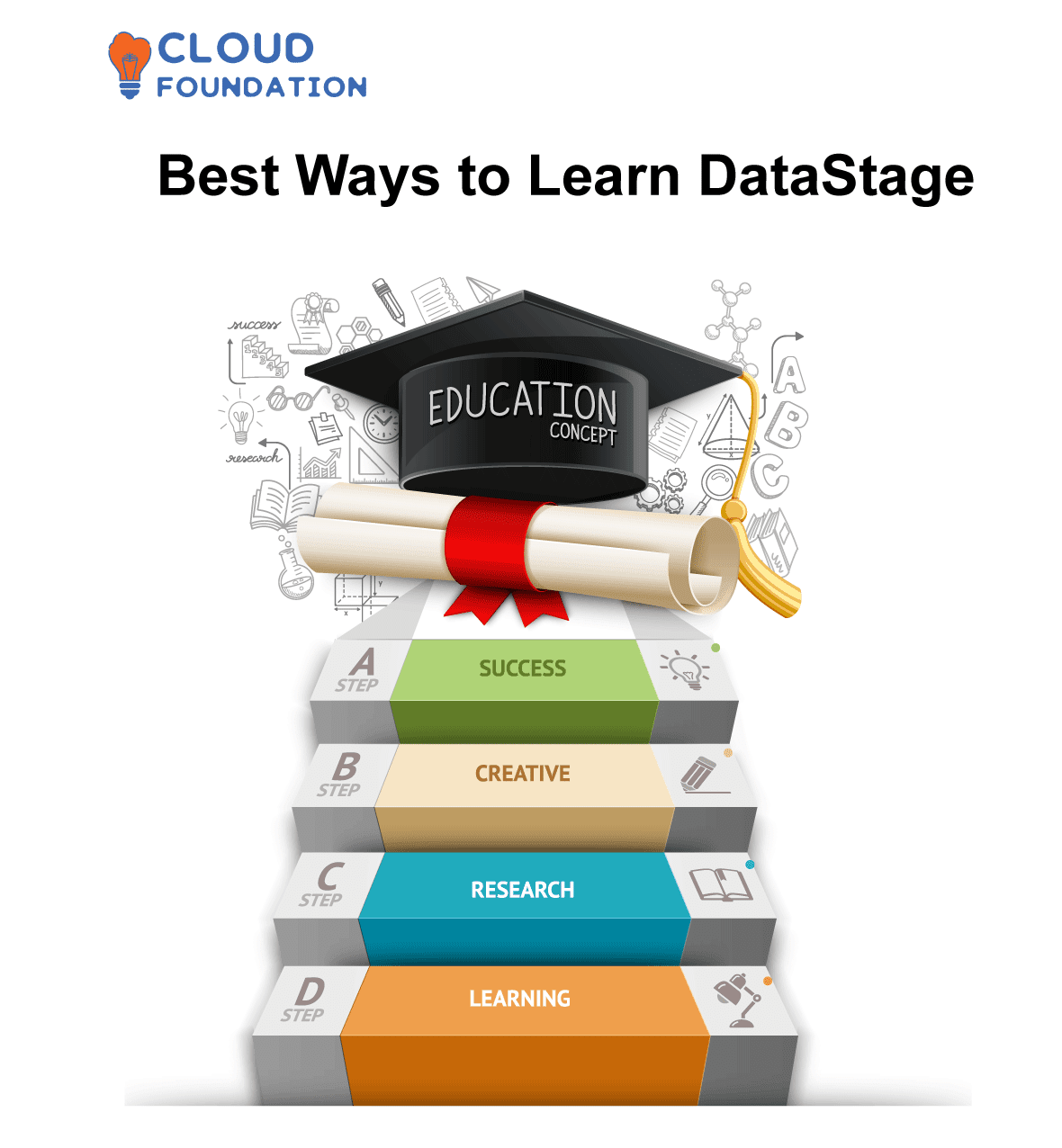
For anyone wanting to begin learning DataStage, enrolling in an introductory course is by far the most effective method of getting acquainted with its ideas and terminology. By engaging with one, they’ll develop a solid grasp on it quickly!
After this, practice by creating your own ETL jobs and exploring their features and options. Utilise any tutorials or user manuals available as well.
Finally, it is wise to sign up with an e-learning platform so you can receive guidance from knowledgeable DataStage users.
CloudFoundation, one of the premier e-learning platforms for DataStage learning, should be considered an option to help with this endeavour.
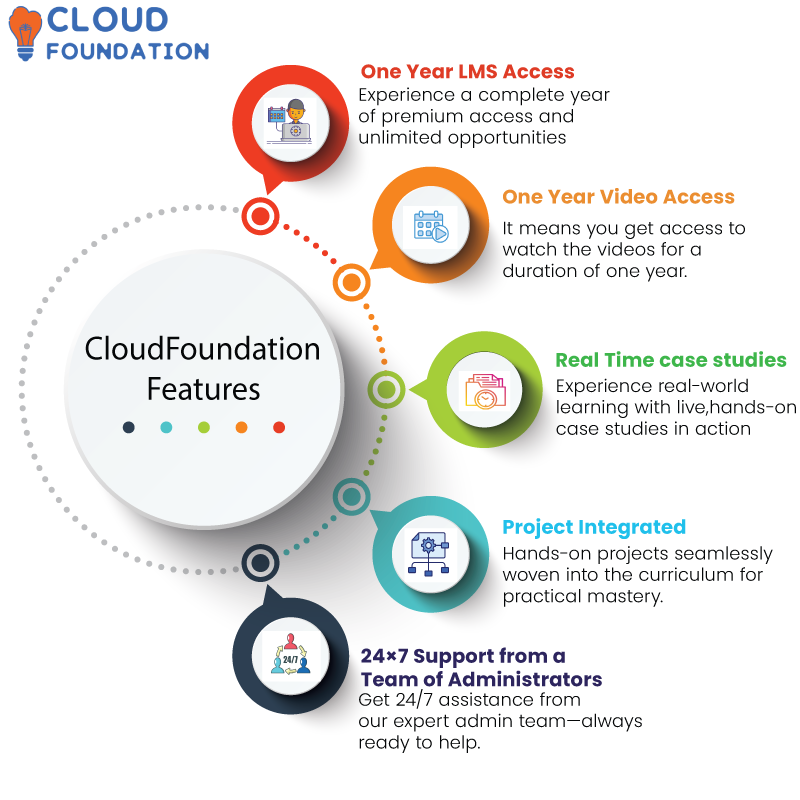
They stood out as one of the leading training providers due to their exclusive learning modes such as self-paced training and instructor-led live training, featuring industry best training provisions with 5+ years’ experience in real-life projects and technology fields.
Enrol with them and get access to DataStage Training videos, DataStage materials and pdfs and informative DataStage Course content.

Akhila
Author



